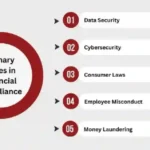Look, Forex trading isn’t for the faint-hearted. If you’ve ever stared at a currency chart and wondered why it feels like trying to predict the weather with a Magic 8-Ball, you get it. It’s all about navigating crazy market fluctuations, potential profits, and yes—heart-stopping losses.
The kicker? You don’t have to gamble it all. Risk management is the secret sauce. Whether you’re just dipping your toes into the forex world or you’ve already blown through your first $100 on a “sure bet” (been there, done that), you need to understand how risk management works. Trust me, without it, you’re more likely to end up crying over a pile of lost trades than celebrating any gains.
Anyway, here’s the thing: the importance of risk management in Forex trading can’t be overstated. If you don’t get this concept, you’re basically hoping your luck will carry you. Spoiler: it won’t.
Why Should You Care About Risk Management in Forex?
Let’s break this down. Think about it—Forex is like a wild roller coaster. Sometimes you’re climbing that steep hill, heart pounding, ready for the thrill. Other times, you’re plummeting down so fast you forget which way is up. The difference between a fun ride and a disaster? A solid risk management strategy.
I learned the hard way. Early on, I thought, “Hey, if I throw enough money at this, I’ll hit the jackpot.” But nope. Every newbie trader goes through that phase of cocky optimism. Fast forward three months, and I was staring at my account balance like, “How did I lose all of that?”
1. Protecting Your Capital: A No-Brainer
I’ll get straight to the point—your capital is precious. It’s your ammo, your lifeblood in this wild game. Without risk management, that ammo can disappear faster than my attempts at online poker (don’t ask). You’ve got to protect it.
I’m talking about using stop-loss orders, setting proper position sizes, and just knowing where to draw the line. If you don’t manage risk, you’re playing with fire, and it’s only a matter of time before you get burned. I’ve been there, done that, and trust me—those losses sting.
2. Emotional Stress: Seriously, Who Needs It?
Okay, we’ve all been there. You wake up, check the markets, and boom—your trade’s gone in the opposite direction. Now your heart’s racing. You’re pacing. Should you sell? Should you wait it out? Next thing you know, you’re checking your phone every 10 minutes and questioning every life decision you’ve made.
Risk management is the antidote to that madness. When you’ve got a plan in place, you don’t need to stress. You can sleep at night without your mind spiraling into the abyss of “What if?”
3. Consistency: It’s a Marathon, Not a Sprint
Trading is a long game. I learned that the hard way too. A few lucky trades will not make you a Forex pro. In fact, they might give you a false sense of confidence—like thinking you can take on the world without a parachute. Spoiler alert: That’s how people end up crying in their coffee.
By practicing solid risk management, you’re building consistency. Slow and steady wins the race. A few bad trades don’t mean the end. They’re just part of the process. Trust me, without risk management, the “bad trades” pile up quicker than a batch of burnt cookies.
Risk Management Tools in Forex Trading
Alright, let’s get technical. There are a handful of key tools every trader should have in their arsenal. And when I say “tools,” I mean ones that save your bacon when things go south.
1. Position Sizing: The Goldilocks Rule
Position sizing is like finding the right balance between your risk and reward. Too much risk? You’re basically gambling. Too little risk? You might miss out on some serious profits.
Here’s how I approach it: I never bet more than 2% of my total account on a single trade. I used to be like, “Nah, let’s go big or go home!” But a few near-heart-attack moments later, I’m a lot more cautious.
2. Stop-Loss Orders: Your Safety Net
Stop-loss orders are your safety net. Period. Without them, you’re just gambling. Think about it—if you’re diving into the deep end without knowing how to swim, you better have a life raft. A stop-loss is that life raft.
The best part? You can set your stop-loss based on your risk tolerance. For example, if you’re okay with losing 50 pips on a trade, set your stop-loss accordingly. When that 50-pip threshold is hit, your trade automatically closes. It’s like saying, “Okay, this trade didn’t go as planned. Let’s cut our losses and live to trade another day.”
Advanced Risk Management Strategies: Because You’re Not a Rookie Anymore
If you’re still reading this, you’re serious about making it in Forex. Congrats, you’re past the “throwing money at the screen” stage. Now, let’s level up with some advanced strategies.
1. Risk/Reward Ratio: The Math You Need to Know
Here’s a rule I follow like it’s my Bible: the risk/reward ratio. If the potential reward is twice as much as your risk, you’re golden. I’m talking a 1:2 ratio, at least.
That means if you’re willing to risk 50 pips, you should aim for 100 pips in return. Simple math, right? Trust me, this mindset saves you from falling for the “quick profit” illusion. It’s all about making calculated moves, not getting swept up in the heat of the moment.
2. Diversification: Don’t Put All Your Eggs in One Basket
Don’t make the rookie mistake of putting all your funds into one currency pair. Spread that risk around. I used to focus on the EUR/USD exclusively, thinking that was the “safest bet.” Guess what? When that pair took a nosedive, I felt like I was hit by a freight train.
By diversifying your trades, you’re spreading your risk. If one trade goes south, the others can keep you afloat. Diversification doesn’t guarantee profits, but it certainly reduces the chances of a total meltdown.
The Mental Game of Risk Management: The Hidden Battle
Trading isn’t just about numbers. It’s about the psychology. If you can’t control your emotions, no amount of risk management tools will help you. Period.
1. Overcoming Greed
Listen, I get it. When you’re winning, you start thinking you’re invincible. That’s the moment when greed creeps in. You ignore your risk limits. You double down on trades. And guess what? You end up paying for it.
I once thought, “This trade is going so well, I’m gonna throw a little more cash at it.” Yeah, you can guess how that went. Greed is a dangerous game.
2. Fear: The Silent Killer
Fear can also mess with your trading. The fear of losing money, the fear of missing out—it’s all part of the deal. When you’re scared, you start second-guessing everything. You hesitate to pull the trigger on good opportunities, and that’s where you lose.
The trick? Stick to your risk management plan, and stop letting fear dictate your actions. Trust me, once you realize you’re not gambling your future with every trade, the fear starts to fade.
Conclusion: Putting It All Together
Here’s the bottom line: Risk management is your shield. It’s the difference between ending up in tears over a blown account and staying in the game for the long haul. But here’s the kicker: it’s not just about protecting your money. It’s about your mental health too.
So yeah, take your time. Learn to use stop-losses. Diversify. Stick to your position sizes. And remember, risk management isn’t just a strategy—it’s a way of life in Forex trading. Get it right, and you’ll not only survive the market, you’ll thrive in it.










Important Posts
Cryptocurrency & Forex Essentials: A Beginner’s Guide
Forex & Crypto News: Market Trends & Investment Tips
How to Make the Most of Forex Trading Volatility